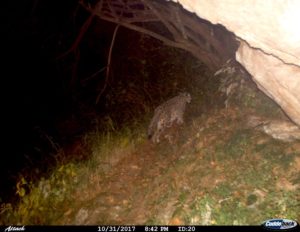Published in The Tribune [External link]

Snow drives animals to lower altitude, poachers train guns
Photographic evidence documented for first timeÂ
- Snow leopards are rarely spotted in the area by residents and that too at an altitude of 3,500 m and above.
- They are listed as a ‘vulnerable’ category animal on the ‘Red List’ of threatened species compiled by the International Union for Conservation of Nature.
- Photographic evidence of the presence of snow leopard has been documented for the first time.
- Snow leopards and other rare species are protected under the strict guidelines of the Wildlife Protection Act-1972.
- The Great Himalayan National Park (GHNP) was declared a protected reserve in 1999 and a UNESCO World Heritage site on June 23, 2014.
Published in The Tribune [External link]
http://www.tribuneindia.com/news/himachal/snow-leopard-spotted-in-kullu-national-park/510318.html



